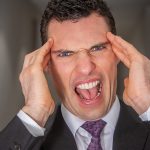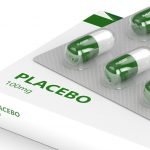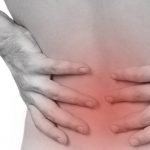Article Summary:
-
40 million American workers experience chronic lower back pain
-
Physical therapy, yoga, Chiropractic, and inversion chairs may be helpful to naturally reduce lower back pain
-
And you can always try an all-natural, topical, deep tissue oil to relieve lower back pain
How To Naturally Reduce Lower Back Pain
It is hard to feel good about anything when your back is hurting. Even if you find a comfortable position sitting or standing, as soon as you move, you may be painfully reminded of your aching nerve endings. And back pain is a very common problem, affecting more than one-quarter of working Americans, according to new research.
The study, which was conducted at the United States National Institute for Occupational Safety and Health in Washington, D.C., found that close to 40 million American workers say they experience chronic lower back pain.1Luckhaupt, Sara E.; et al. “Prevalence, Recognition of Work-Relatedness, and Effect on Work of Low Back Pain Among U.S. Workers.” Annals of Internal Medicine. 14 May 2019. Accessed 19 May 2019. http://annals.org/aim/article-abstract/2733500/prevalence-recognition-work-relatedness-effect-work-low-back-pain-among. These results are based on a survey of more than 19,000 adults in 2015. The questions probed whether a subject suffers from lower back pain, if the pain was related to their job, and whether the pain impacted their work performance.
Approximately 26 percent of the participants reported experiencing lower back pain with men and women both affected. The most common age to report experiencing lower back pain were those people between 45 and 64 years old.
But whether an injury takes place at work, at home, when you’re out and about, or you can’t even pinpoint what made the issue begin in the first place, lower back pain can and should be dealt with to maintain a positive quality of life and prevent it from becoming worse.
Your Doctor’s Back Pain Recommendations
If symptoms come on suddenly or are so bad you’re having trouble with simple daily motions, a trip to your physician’s office may be a good first step. The recommendations provided will vary depending on the source of the lower back pain. Applying ice to reduce inflammation, using heat to loosen muscles and stimulate blood flow to the area, and taking a couple of days to rest are all safe, smart instructions. You might also benefit from a course of physical therapy that will have a professional assessing your lower back and working you through a series of exercises and massage to alleviate the pain.
However, if your doctor is quick to prescribe pain medications—even of the non-opioid variety—you will probably want to look in other directions first. Ibuprofen is an over-the-counter non-steroidal anti-inflammatory (NSAID) that can dull your pain for the short-term but has been linked to kidney failure, heart attacks, and high blood pressure. Prescription pain relievers such as COX-2 inhibitors can cause stomach bleeding, headaches, dizziness, and kidney problems. And there’s no need to even discuss why you want to avoid oxycodone as a remedy.
Yoga for Lower Back Pain Relief
The gentle stretches of yoga can help soothe aching muscles in your back and relieve some of the pressure on your nerves in the area. The poses can also encourage greater blood flow to the region to initiate healing. And yoga helps you develop better posture, which may prevent back pain from recurring. If you are new to yoga, make sure you take a beginner’s class and tell your instructor about where in your back you are experiencing pain, as there might be modifications needed for some of the poses.
Yoga will also provide you with benefits moving forward, even after your back pain has subsided. It builds strength in your core muscles—front and back—which hold your back in alignment, thus making back pain considerably less likely.
Chiropractic Can Do Wonders for Your Lower Back
Visiting a chiropractor or an osteopath can feel like a lifesaver to those with chronic back pain. They will ask you a number of questions about where you are experiencing the pain, then manipulate the tissue and make spinal adjustments to provide relief. Make sure to visit a trained and licensed practitioner.
Using either their hands or a device, they will apply pressure to the joints of your spine. These techniques can effectively provide relief from pain whether its source is in the muscles, joints, or ligaments.
Inversion Chairs for Lower Back Pain
If you’re plagued by consistent back pain and find that chiropractors and medications only offer temporary relief, then an Inversion Chair might be an affordable, at-home solution. By using your own body weight and gravity, the chair gently elongates your spine, separating your vertebrae, thereby decompressing, lengthening, and strengthening your spine.
All-Natural, Topical, Deep-Tissue Oils for Lower Back Pain
The right combination of essential oils, herbs, and nutraceuticals can quickly penetrate the skin and reach deep in your soft tissue to:
- Decrease the levels of the “pain” bio-chemicals.
- Block the release of Substance P, thus slowing down the transmission of the pain impulse along the nerves of pain, the C fibers.
- And slow down the transmission of pain along the spinal cord.
When it comes to topical pain relief formulas, cayenne, menthol, and wintergreen are the big three. Virtually every formula that you buy will be based on one, two, or all three of those ingredients. But that’s just the beginning. To learn more about what to look for in an optimized, topical, pain-relief formula, check out Jon Barron’s article: Give Me Your Pain.
References
| ↑1 | Luckhaupt, Sara E.; et al. “Prevalence, Recognition of Work-Relatedness, and Effect on Work of Low Back Pain Among U.S. Workers.” Annals of Internal Medicine. 14 May 2019. Accessed 19 May 2019. http://annals.org/aim/article-abstract/2733500/prevalence-recognition-work-relatedness-effect-work-low-back-pain-among. |
|---|










